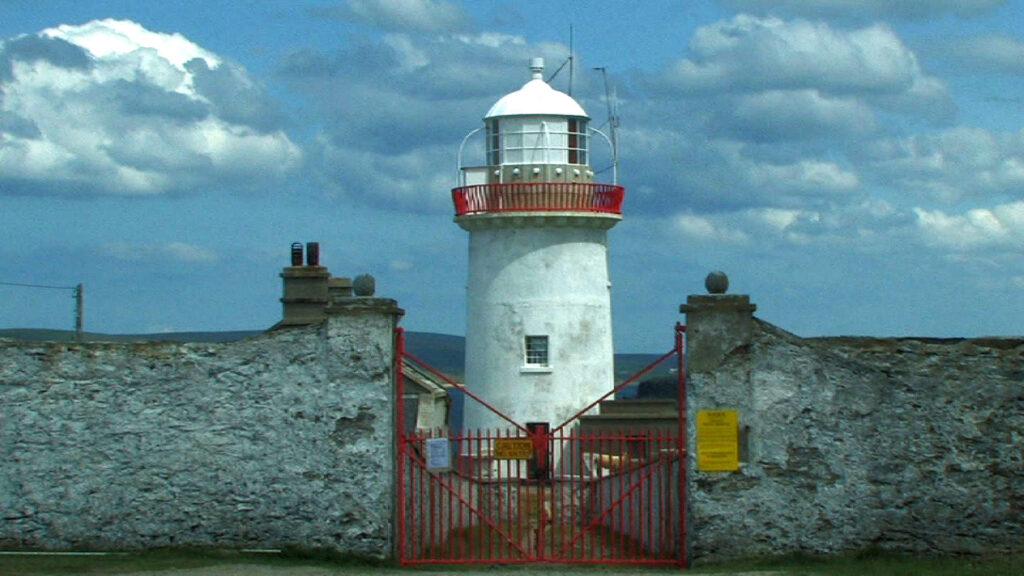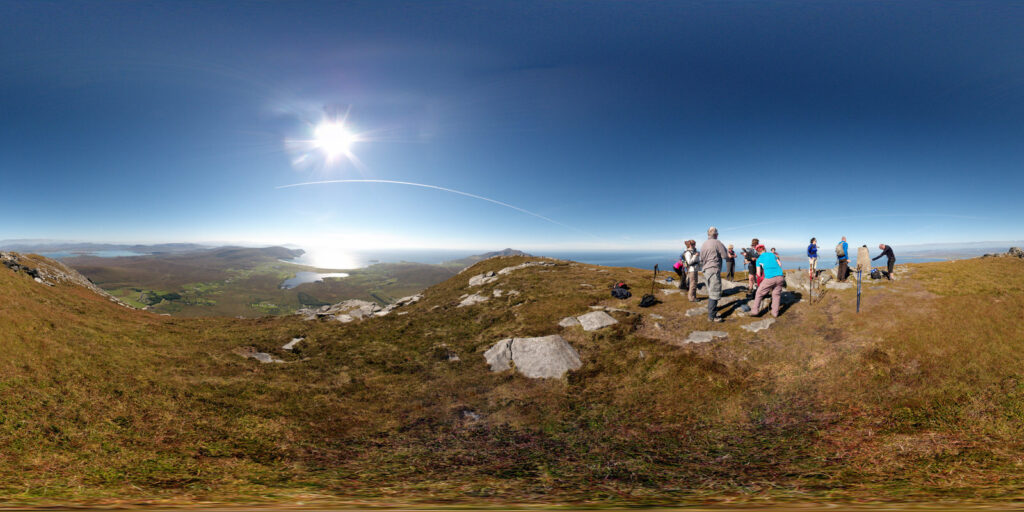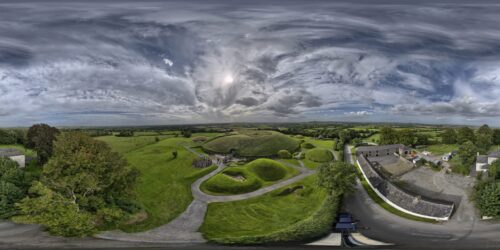See some of Ireland’s famous heritage sites in a more immersive way. Just Click on any image to see more……………..
in association with Remote Ireland Tours ![]()

Bective Abbey is famous for being a well-preserved Cistercian abbey located in County Meath, Ireland. It was founded in the 12th century and played a significant role in the religious and social history of the area. The abbey is also known for its beautiful architecture, including its impressive cloister and tower. Many visitors come to Bective Abbey to explore its history and take in the peaceful surroundings.
MORE
Films made at Bective Abbey include “The Tudors.” The historical drama television series, which aired from 2007 to 2010, featured scenes that were filmed at there. Other notable productions include “Braveheart” and “The Last Duel”.

Broadhaven Lighthouse is a prominent coastal landmark located near Broadhaven Bay in County Mayo, Ireland. The lighthouse, known locally as Ballyglass Lighthouse, was built in 1806 by the Ballina Harbour Commissioners to help guide ships safely through the treacherous waters of Broadhaven Bay.
MORE
The lighthouse stands at a height of 13 meters and has a distinctive white tower with a black lantern room. It is an active navigational aid, emitting a white flash every 5 seconds to warn sailors of the rocky shoreline.
Over the years, Broadhaven Lighthouse has become a popular spot for tourists and photographers, offering stunning views of the surrounding coastline and the Atlantic Ocean. It is also a protected structure under the National Monuments Act, ensuring its preservation for future generations to enjoy.

Slievemore is a historical site located on Achill Island in County Mayo, Ireland. The name “Slievemore” comes from the Irish word “Sliabh Mor”, which means “big mountain”. The site is home to a large prehistoric hill fort that dates back to the Bronze Age, around 2500 BC.
MORE
The hill fort at Slievemore is one of the largest and most well-preserved in Ireland, consisting of a series of concentric stone walls and dwellings. It is believed that the fort was built as a defensive structure, with its elevated position providing a strategic advantage for its inhabitants.
In addition to the hill fort, Slievemore is also known for its medieval village, which was once home to a thriving community of people who cultivated the land and fished the nearby waters. The village was abandoned in the mid-19th century during the Great Famine, when many of its inhabitants were forced to emigrate in search of food and work.
Today, Slievemore is a popular tourist destination, with visitors coming to explore the ancient ruins and enjoy the stunning views of Achill Island and the surrounding Atlantic Ocean. The site is also of great archaeological significance, providing valuable insights into the history and culture of Ireland’s ancient past.

Slieve Donard is the highest peak in the Mourne Mountains range located in County Down, Northern Ireland. It stands at 850 meters (2,790 feet) and offers stunning panoramic views of the surrounding landscape, including the Irish Sea, Carlingford Lough, and the Isle of Man.
MORE
The mountain is a popular destination for hikers and outdoor enthusiasts, with several walking trails leading to the summit. The most well-known route is the Glen River Path, which starts at the village of Newcastle and winds its way up through forests and rocky terrain before reaching the summit.
At the top of Slieve Donard, there is a cairn marking the highest point, as well as a small stone shelter for hikers to take a break and enjoy the views. On clear days, it is possible to see as far as the Isle of Man and even the Scottish coast.
Slieve Donard is also steeped in mythology and folklore, with legends of giants and fairies said to inhabit the mountain. The name “Donard” is believed to come from the Irish word “Domhanghairt,” meaning “place of execution,” as it was once used as a site for pagan rituals.
Overall, Slieve Donard is a must-visit destination for nature lovers and adventurers alike, offering a challenging yet rewarding climb with breathtaking views.
Dún Briste is a sea stack located off the coast of County Mayo in Ireland. It rises 50 meters (164 feet) above the Atlantic Ocean and is a popular tourist attraction due to its unique geological formation and stunning coastal views.
MORE
Dún Briste was formed over 350 million years ago when layers of shale and sandstone were eroded by the sea, leaving behind a freestanding pillar of rock. The name “Dún Briste” translates to “broken fort” in Irish, referring to its isolated and fractured appearance.
Legend has it that Dún Briste was created by the giant St. Patrick in order to banish a pagan chieftain from the mainland. The chieftain of the area, Crom Dubh, refused to convert to Christianity, so St. Patrick struck the ground with his staff, causing Dún Briste to break off from the mainland and trap Crom Dubh on the sea stack forever.
Today, visitors can enjoy stunning views of Dún Briste from the nearby Downpatrick Head, a picturesque headland that offers panoramic vistas of the rugged coastline and surrounding countryside. The sea stack is also a popular spot for birdwatching, with numerous seabirds nesting on its cliffs.
Overall, Dún Briste is a fascinating and visually striking natural wonder that attracts visitors from around the world to marvel at its beauty and learn about its geological history.

